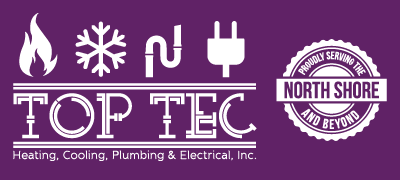
A furnace is almost always a background player in your home, ensuring you're warm during the cold winter months. It regularly won't be noticed until something goes wrong.
One cause might be that your furnace has a cracked heat exchanger. It’s a potentially dangerous issue, so it’s worthwhile to familiarize yourself with the evidence of a cracked heat exchanger and what you should do if you suspect that is the problem.
What Is a Heat Exchanger in a Furnace?
A heat exchanger helps transition heat from the combustion chamber inside your furnace to the air that circulates through the air ducts. It usually accomplishes this via coils or tubes that warm the air while functioning as a barrier to keep gas produced in the combustion chamber, called flue gasses, from leaking out into your home.
Is a Cracked Heat Exchanger Dangerous?
Because of its central role, it shouldn't come as a surprise that a broken heat exchanger can pose a risk. A crack in the heat exchanger can permit dangerous gasses – like carbon monoxide, which can be lethal – to be distributed throughout your home.
For this reason, never turn on your heater if you think you're dealing with a cracked heat exchanger, as doing so could make your entire household ill. Contact an HVAC professional immediately if you are worried your heater has a cracked heat exchanger that should be repaired.
Four Warning Signs of a Cracked Heat Exchanger:
- Furnace switches off: A crack in your heat exchanger may cause your furnace to switch off.
- Odd Smells: If the air leaving your furnace has an intense chemical scent, it may be an indicator that gasses are slipping through cracks in your heat exchanger. These gasses, which will often smell like formaldehyde, are a common warning sign.
- Carbon monoxide alarm goes off or you notice symptoms of poisoning: If a cracked heat exchanger is emitting carbon monoxide inside your home, your carbon monoxide alarm could go off or household members could experience signs of carbon monoxide poisoning. Side effects include headaches, dizziness, weakness, nausea, vomiting or feeling drowsy. If an alarm goes off or you feel unwell, exit the home as soon as you can and then call for help.
- Soot: If you find black sooty collecting around the exterior of your furnace, it’s more evidence something might be seriously wrong.
What to Do if a Furnace Heat Exchanger is Cracked
If you suspect your furnace has a cracked heat exchanger, call a pro with extensive experience in furnace installation Libertyville as soon as possible so they can inspect your system and, if needed, start a furnace heat exchanger replacement. Costs often differ depending on the situation, but estimates run in the neighborhood of $1,000 to $3,000.
Fortunately, the good news is that heat exchangers are regularly included in the warranty. You should review the warranty paperwork on your furnace, since while the warranty might not cover the entire cost of repairs, it still may significantly shrink your bill.
How to Prevent a Cracked Heat Exchanger in Your Home
One of the best ways to minimize the risk of problems in your furnace overall is via regular furnace maintenance. Furnaces provide the best possible return on investment when they operate efficiently. Hiring a certified professional to inspect your furnace for broken-down parts, clogs in the air filters and other likely problems can help you avoid getting a big bill later on.
It’s also helpful to review your furnace filters every few months – it’s recommended some filters be changed every 90 days or sooner if they are dirty or grimy. While the filters aren't connected to the heat exchanger itself, the strain of pulling air through a clogged filter makes the entire furnace work harder to accomplish its job. And the harder your furnace has to work, the more deterioration pieces like the heat exchanger will endure.
